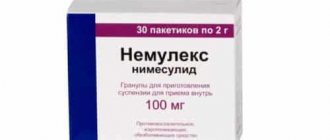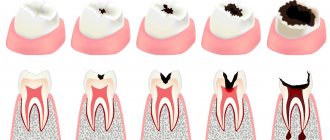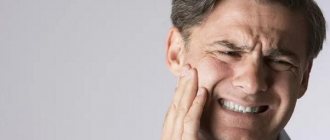Many of our patients (as well as patients, for example, of chiropractors or neurologists) do not even realize how interconnected the problems they are being treated with are. For example, the jaw joint hurts, the head hurts, shooting in the ear, clicking in the jaw, pulling at the base of the skull... it would seem that these are different symptoms, but the reason may be the same for everyone: TMJ dysfunction
.
Functions of the TMJ
TMJ
or
temporomandibular joint
is a joint located above the ear that connects the temporal bone to the lower jaw and the lower jaw to the skull. The muscles that are attached to this joint are actively involved in speaking, facial expressions, chewing, and swallowing. Together, muscles, ligaments, cartilage and joints make up the apparatus, thanks to which we can generally open and close our mouth, move our jaw back and forth and left and right, and the load on this apparatus is significant - comparable to the load, for example, on the knee joint.
The temporomandibular joint is the only paired and symmetrically moving joint in the human body, and problems with its functioning lead to numerous unpleasant diseases. TMJ dysfunction—limited work and mobility of the jaw joint—occurs when the joint on the right and left sides of the skull does not move synchronously or evenly. For example, to open the mouth, the patient must first move the lower jaw from side to side, “until it clicks.” Or when you open your mouth, you feel pain in your jaw or temples.
This disease has many names: arthritis (arthrosis) of the TMJ, myofacial syndrome, myoarthropathy of the TMJ, chronic dislocation of the lower jaw, Costen's syndrome (named after the American doctor who first identified this disease). This pathology is difficult to diagnose and treat, and at the same time it can cause a wide variety of pain - from headaches to neck pain.
Statistical fact: from 30% to 70% of dental patients suffer from functional pathology of the temporomandibular joint. And these are not always older people, as one might expect. On the contrary, people of all ages, including children, suffer from TMJ pain and related pain.
TMJ dysfunction was first described by otolaryngologist (ENT doctor) Kosten in 1934. Kosten studied pain and noise in the ears and burning in the nose, which intensified during or after eating, and was the first to think of linking them with malfunction of the temporomandibular joint. Subsequently, his colleagues and other doctors who examined this problem expanded and supplemented the list of symptoms. Now this list is quite extensive, and often not all symptoms can be associated specifically with TMJ problems.
Diagnostics
Pain when opening the mouth requires, first of all, diagnosis; only an experienced doctor can make a correct diagnosis. There may be several reasons for this pathology, and the doctor’s task is to correctly diagnose the disease, since the treatment method will depend on this. During the consultation, the doctor examines the patient and finds out, the patient’s posture is also assessed, and how difficult the functions of swallowing, chewing and breathing are.
During the examination, the doctor will also pay attention to the location of the pain, whether it manifests itself on one side or is bilateral. Based on the results, an additional examination will be prescribed: x-rays, manual functional analysis and other procedures.
An individual and comprehensive approach is the priority of the Orto-Artel clinic. Therefore, to establish the root cause of the problem and its further solution, consultations with specialists such as:
- osteopath;
- neurologist;
- kinesiologist;
- psychologist.
The joint efforts of dentists and general specialists will make it possible to make the correct diagnosis.
If your jaw hurts when chewing or opening your mouth, then in most cases, the pain is a sign of inflammation. Therefore, often, when ear pain or tinnitus is detected, it is associated with purely “ear” problems. And with pain localized in the area of the temporomandibular joint, doctors who do not have adequate experience in diagnosing and treating TMJ dysfunctions usually make a standard diagnosis - “arthritis of the temporomandibular joint.”
The diagnosis of arthritis in medicine means inflammation of the joint, but this formulation does not include information about the specific causes of such inflammation. Therefore, making such a diagnosis is a very general formulation. It's a very general diagnosis. Non-binding. Does not reflect the root cause of inflammation. In fact, it is only a statement of the fact of inflammation in the joint.
But the causes of this inflammation can be very different, and accordingly, treatment, depending on the causes of inflammation, will differ significantly in different patients, even those who have common symptoms - pain in the jaw joint when opening the mouth. Or ear pain. Inflammation is the body's normal response to injury. And injury can be caused by various factors.
Diagnostics is the first and key step in treating pain in the jaw when opening the mouth. Do you want to know why it’s impossible to do without diagnostics?
In the case of joints, most often the injury will be mechanical. It occurs when the bones that form a given joint (in particular the head of the mandibular condyle) exceed their normal range of mobility. And they overstretch the joint capsule, ligaments and muscles associated with this joint. Every person has encountered this at least once in their life. Because this process has a well-known name - joint dislocation.
The dislocation may be acute. This is when it happens sharply and suddenly. In the case of the temporomandibular joint - with sudden opening of the mouth (for example, when yawning). Or due to a blow to the lower jaw area.
The dislocation can be chronic. This is when the bones that form a joint regularly (constantly, for a long time) exceed the amount of their normal mobility. In the case of TMJ, this happens when the bite is incorrect. Then each closure of the teeth will direct the lower jaw into the “wrong” position. And it is chronic injury that is more dangerous. Because, unlike an acute injury, a gradual stretching of the capsule and ligaments of the joint occurs, which camouflages (hides) the painful manifestations of the problem. After all, pain will occur in the later stages, when the process has already gone quite far, which often leads to untimely (belated) seeking medical help. Chronic injury is the cause of 90% of all TMJ problems. And it refers to functional problems (dysfunctions). When the daily, seemingly normal functioning of this joint leads to its gradual wear and tear and, ultimately, destruction.
The generally accepted traditional allopathic approach to the treatment of TMJ pathology with a banal (simplified) diagnosis of arthritis, and the resulting treatment (all this anti-inflammatory therapy, using pills, physiotherapy and other “traditional” methods) is erroneous and ineffective, since it does not eliminate the root cause of the problem .
Treatment in installments
The Orto-Artel clinic offers installments for the entire process of treating any disease. Personal conditions are considered on an individual basis.
Find out more
or call 8 (495) 128-11-74
In addition, I would like to note that pain in the jaw when opening the mouth is not always associated with problems in the TMJ (just as pain in the ear or tinnitus is not always associated directly with “ear” problems). Therefore, to differentiate the cause of the problem, to determine the true source of pain, consultation and assistance from a qualified specialist who understands these subtleties is necessary.
Symptoms of TMJ dysfunction
- Pain in the jaw, increasing when opening the mouth, chewing, speaking, yawning;
Clicking in the joint of the lower jaw, the jaw “jams”, it does not open, does not close, or has begun to close differently;- Pain in the temples, in the eye area, visual impairment, photophobia (sensitivity to light);
- Pain, ringing and noise in the ears, in the ear area, feeling of pressure in the ears;
- Frequent headaches, dizziness, migraines;
- Sleep disorders, insomnia, anxiety, depression;
- Pain in the neck, in the lower part of the skull;
- Tooth pain from sweets, hot, cold.
This diversity in symptoms, which often makes it difficult for doctors to diagnose, is explained by the fact that the joint is connected to many important organs and parts of the body (eyes, ears, neck, head) and errors in its functioning can affect everything at once, or they can only affect something one. It is usually possible to determine that the problem is in the temporomandibular joint only in a complex manner.
In most cases, TMJ dysfunction is manifested by pain in the face, joints of the jaw, neck, shoulders, ears, crunching and clicking. Complaints of dizziness, difficulty chewing food, speech and hearing disorders, difficulty opening the mouth, “jamming” of the jaw, or even the appearance of swelling and fever are also common.
What else do you need to know?
As mentioned above, it is impossible to independently identify the cause of unpleasant sensations when opening your mouth. Even when the patient consults a doctor, additional examination is required. The specialist usually prescribes an X-ray of the jaw, computed tomography, and MRI. Do not forget that each specific ailment requires a special approach to treatment. The general condition of the patient, the nature of the disease, and its stage are taken into account. Usually the pathology disappears when the cause that provoked it is eliminated. So:
- Injuries. A fixing bandage is applied and analgesics are prescribed. Cold compresses are recommended for patients; they will help relieve swelling and pain.
- Dental diseases are quite common. Caries, cysts, and other ailments require immediate treatment. After eliminating the problems, the pain usually goes away. Patients are also prescribed antibiotics.
- Neuralgia. This category includes a number of dangerous ailments. For their treatment, vitamins, antiviral drugs, and special physical training are recommended (exercises will help strengthen the jaw and relieve discomfort when it opens).
- ENT diseases. With otitis media, sinusitis and other ailments, patients often complain of pain that occurs when opening the mouth. For treatment, antipyretics, antibiotics, physiotherapeutic procedures, and drugs to strengthen the immune system are prescribed.
Pain in the jaw joint: causes
- Defects in the dentition - lack of teeth, overestimation of fillings;
Pathological abrasion of teeth;- Broken bite
;
- Overload of the masticatory muscles (for example, if you chew on only one side for a long time);
- Inaccurate prosthetics, errors in orthodontic treatment;
- Other anomalies of the oral cavity and jaw structure;
- Bruxism, involuntary grinding of teeth.
- Birth trauma, trauma to the skull and jaw;
- Osteochondrosis and scoliosis of the spine;
- Severe constant stress
;
- An infection in the joint cavity that provokes inflammation of the TMJ.
Self-help methods for diseases of the temporomandibular joint:
The following self-help methods may provide temporary pain relief:
- Moist Heat: Compressing with a hot pack or bottle wrapped in a warm, damp towel can improve chewing function and reduce pain. Be careful to avoid burns when using high temperature.
- Ice: Ice packs can reduce inflammation, numb pain, and promote healing. Do not place the ice pack directly on your skin. When using, wrap the bag with a clean cloth. Do not use the ice pack for more than 10-15 minutes.
- Diet - Soft Foods: Soft or mixed foods allow the jaw to rest temporarily. Remember to avoid hard, crunchy, and chewy* foods. Do not stretch your mouth when trying to bite off large pieces or the whole fruit.
- Over-the-counter analgesics: Over-the-counter (over-the-counter) analgesics are useful for temporarily reducing pain. Together with your doctor, carefully read the instructions for each medication before using it.
- Lower jaw exercises: Slow, gentle exercises of the lower jaw can help increase jaw mobility. Your doctor or physical therapist can evaluate your condition and suggest appropriate exercises based on your individual needs.
- Relaxation techniques (relaxation techniques): Relaxation can help combat the pain that accompanies TMJ dysfunction. Deep, slow breathing increases relaxation and reduces pain sensitivity.
If you find an error, please select a piece of text and hold LEFT Ctrl and press Enter.
You can send no more than 5 messages in 30 minutes!
Liked? Tell your friends!
Diagnostics and x-ray of the temporomandibular joint
Diagnosis of TMJ when it is dysfunctional is difficult due to the variety of clinical complaints. This leads to the fact that the patient can undergo examination by different specialists for a long time, wasting time. A full examination is carried out by dentists
(primarily an orthopedist or orthodontist) and neurologists.
Diagnosis with the naked eye is difficult, and TMJ problems can only be directly noticed if the malocclusion is clearly visible. Most often, dysfunction of the temporomandibular joint is associated precisely with disorders of bite and jaw closure.
The most reliable and effective way is to conduct x-ray diagnostics and orthopantomogram
jaws. In some cases, an MRI may also be done.
Prevention
Based on what was written above, we can conclude that painful sensations when opening the mouth do not just arise. They are a manifestation of dangerous illnesses. To prevent this phenomenon from occurring, it is necessary to spend as much time as possible in the fresh air, exercise your jaw, and strengthen the immune system. It is also recommended to respond in a timely manner to disruptions in the body, even minor ones, and undergo preventive examinations from specialized specialists. As mentioned above, a crooked bite can cause pain when opening the mouth. Therefore, this pathology must be eliminated at an early age. The price of veneers is quite affordable, and their installation does not take much time and is carried out by experienced specialists in a dental office.
Treatment of the temporomandibular joint
Complex treatment of TMJ is possible only in dentistry, and is possible thanks to:
- surgery on the lower jaw;
- orthodontic treatment
(prescribing special trainers that will be worn at night and reduce pain by adjusting the load on the joint - the same trainers are recommended for bruxism) and bite correction with braces;
- orthopedic treatment
and
implantation
(insert a suitable prosthesis to restore the correct closure of the jaws).
Treatment is always prescribed individually, based on the results of an examination by an orthodontist, and is most often carried out comprehensively. It is dangerous to neglect TMJ diseases: this can lead to arthrosis, in which connective tissue grows in the joint cavity, which, in turn, threatens complete immobilization of the joint (ankylosis).
Severe pain and joint spasms can be relieved with compresses and painkillers; Stresses that provoke tension in the joint can be relieved with sedatives, but all these are half measures that do not treat the root cause of the pain.
Causes and prevention of arthrosis of the facial jaw
Based on the reasons for their occurrence, it is customary to distinguish between primary and secondary arthrosis of the jaw. The first are typical for older people (50-60 years and older) and are not associated with pathologies of the joints or dentofacial apparatus. The latter occur against the background of other disorders - for example, injury, infection, metabolic disease.
Let us consider the causes of arthrosis of the jaw joint in more detail:
- infectious disease (acute or chronic, for example, tonsillitis);
- sports or household injury (dislocation or subluxation of the jaw joint, bruise, jaw fracture);
- systematic overload (for example, when crunching nuts or intense exercise in the gym);
- dental diseases (absence of a tooth or part of it, “gentle” chewing on one side due to a dental problem);
- bruxism (unconscious grinding of teeth, usually during sleep), stress, high mental stress, mental disorders and nervous tics;
- diseases of the cardiovascular system;
- endocrine and metabolic diseases (gout, diabetes, hormonal imbalance);
- congenital anomalies of the dentofacial apparatus (including malocclusion), in which the load is distributed incorrectly;
- genetic diseases of muscle and cartilage tissue (scapulohumeral-facial muscular dystrophy, collagenopathies, as well as systemic lupus erythematosus and other autoimmune diseases);
- age-related changes (both senile and hormonal - for example, with menopause).
Often, arthrosis of the facial jaw (or temporomandibular joint - TMJ) begins due to a violation of occlusion - i.e., contact of teeth and functions of the masticatory muscles (with loss of a tooth, tumor or inflammation of the muscle muscles, lesions of the facial and trigeminal nerves). Therefore, in order to prevent arthrosis of the jaw joint, it is important to promptly replace chewing teeth with prosthetics, eliminate inflammation of the gums and dental pulp, and also treat under-erupted wisdom teeth. Do not ignore innervation disorders and muscle injuries due to stroke, surgery or incorrectly selected dentures.
Regardless of the causes, arthrosis of the jaw joint remains a chronic disease that requires lifelong monitoring and inevitably progresses.
Treatment
Conservative therapy
Therapeutic tactics are determined by the cause of the symptom. For patients with dental pathologies, local treatment is indicated. Removable dentures and orthopedic structures are replaced, and other types of prosthetics are selected. In case of pulpitis, the cavity is treated with antiseptics, antibiotics, proteolytic enzymes, pastes are applied to eliminate inflammation and stimulate regeneration, and after a few days a filling is performed. For other diseases, the following methods are recommended:
- Inflammatory processes
. Antibiotic therapy is carried out in the pre- and postoperative period. At the initial stage, broad-spectrum drugs are administered parenterally. After receiving culture results, the medication is changed taking into account antibiotic sensitivity. Dressings are performed and rinsing is performed. Analgesics are prescribed to reduce pain. - Traumatic injuries
. In case of fractures of the angle, the body of the lower jaw without displacement, conservative immobilization is carried out by double-jaw wire splinting. To prevent inflammation, antibacterial agents are used, and painkillers are used to reduce pain. - Neuralgia
. Anticonvulsants are used to eliminate pain attacks. To enhance the effect, the treatment program is supplemented with antispasmodics, antihistamines, and microcirculation correctors. Trigger point blockade is carried out with a mixture of glucocorticoids and local anesthetics. They give a referral for ultraphonophoresis and galvanization with novocaine. - Muscle pathologies
. For bruxism, an integrated approach is effective, including medication, dental, physiotherapeutic, psychotherapeutic methods, and the use of protective mouthguards. Patients with myofascial syndrome are prescribed muscle relaxants, NSAIDs, and antidepressants. - IHD
. As part of drug therapy, antianginal agents, beta-blockers, calcium channel blockers, antioxidants, antiplatelet agents, and antisclerotic drugs are indicated.
Surgery
The choice of surgical technique depends on the cause of the symptom:
- Inflammatory diseases
: opening, drainage of abscesses and phlegmons, sequestrectomy for osteomyelitis. - Injuries
: open osteosynthesis using bone sutures, polyamide thread, mini-plates. - Neoplasms
: curettage, excision of benign neoplasia within healthy tissue (often with extraction of teeth), resection or disarticulation of the lower jaw for a malignant tumor. - Neuralgia
: microsurgical decompression, percutaneous radiofrequency destruction, stereotactic radiosurgery. - IHD
: thrombolysis, emergency coronary angioplasty in the acute period of a heart attack; planned coronary artery bypass surgery, balloon angioplasty for angina pectoris, post-infarction conditions.
Possible causes of pain
Most often, the joints of the jaw hurt because the muscle fibers are strained and anatomical changes occur in the joint unit. The situation is aggravated by psychological reasons, sleep disorders, and emotional stress. In addition, provoking factors include:
- Bruxism, that is, grinding of crowns;
- Osteopenic disorders of the body;
- Genetic bone pathologies;
- The jaw joint near the ear hurts when an infection develops, the patient has suffered a neck or head injury;
- Muscle pain, internal disorders, tension;
- Ankylosis, arthritis, excessive mobility;
- Lack of chewing organs, unprofessional orthodontic treatment;
- Active conversation load;
- Pain in the jaw joint and radiates to the ear in patients with the habit of biting nails or placing the smartphone close to the hearing organ;
- Problems of the central nervous system, scoliosis and osteochondrosis of the spine;
- Pathologies of the endocrine system;
In addition, dysfunction occurs with asynchronous movements of the joints on both sides.










